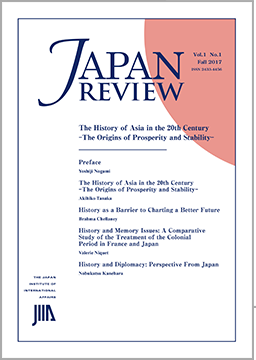Column/Report
|Top page|Print/Mobile page|Tweet
China’s Evolving Reconnaissance-Strike Capabilities
Implications for the U.S.-Japan Alliance
Ian Easton (2013 JIIA Visiting Fellow / Research Fellow, Project 2049 Institute)

(2014-02-19)
Topics
Membership
 Archive of high-quality scholary works translated from Japanese to English
Archive of high-quality scholary works translated from Japanese to English
A highlight of JIIA's recent activities and a summary of its organization.
Publication
Journal

Kokusai Mondai (International Affairs)
No.680 April 2019 "Protecting Human Rights via International Procedures"
Vol.2 No.4 Spring 2019
"Japan and the Post-World War II Liberal International Order"
Books
 What Do Alliances Mean to the US?
What Do Alliances Mean to the US?
(Fumiaki Kubo ed., 2013)






